Common sense of Coffee sharing several famous Coffee varieties
civet coffee
Coffee beans are a kind of civets food range, but coffee beans can not be completely digested by the digestive system. Coffee beans are fermented in the civets stomach and discharged through feces. Local people take coffee beans out of civets feces and then process them, which is called "cat feces" coffee. This coffee has a unique taste and different taste, but people who are used to this taste will never forget it. Due to the gradual deterioration of the wild environment, Civet populations are also slowly dwindling, resulting in limited production of this coffee, which is quite fortunate for those who can taste it.
blue Mountain
It is a kind of coffee with high public reputation. It is only produced in the Blue Mountain region of Jamaica in Central America. Only coffee grown in the Blue Mountain region above 1800 meters above sea level can be authorized to use the logo of "Jamaica Blue Mountain Coffee," accounting for 15% of the total production of Blue Mountain Coffee in Jamaica. Coffee grown between 457 meters and 1524 meters above sea level is called Jamaica High Mountain Supreme Coffee Beans, and coffee grown between 274 meters and 457 meters above sea level is called Jamaica Prime Coffee Beans. Blue Mountain coffee has mellow, bitter slightly sweet, soft smooth characteristics, and slightly sour, can make the taste sense more sensitive, taste its unique taste, is the best coffee.
The real Blue Mountain coffee is produced only 40,000 bags per year, and because Japan has always invested in the Jamaica coffee industry, most of the Blue Mountain coffee is now owned by the Japanese, who have also obtained the right of first refusal to buy Blue Mountain coffee. 90% of Blue Mountain Coffee is purchased annually by Japanese. Blue Mountain coffee is now in short supply, regardless of price, since the rest of the world can only get 10 percent of Blue Mountain coffee. Cafes and hotels in China sell dozens of dollars a cup of so-called "Blue Mountain Coffee." More than 99% of them are not real Jamaica Blue Mountain Coffee, but Blue Mountain Coffee blended with coffee beans from other origins. The world-famous Jamaica Coffee Board (CIB) only gives wallenford, jablum, Silver Hill and Moy Hall four legal coffee estates to process blue mountain coffee beans intensively. All Jamaica blue mountain coffee packages are marked with the name of the estate they process.
Mokha
Some people say: coffee, blue mountain can be king, mocha can be said after. Mocha coffee has some of the world's most unique, rich, and fascinating flavors: red wine, wild, dried fruit, blueberry, grape, cinnamon, tobacco, sweet spice, log, and even chocolate. Mocha coffee taste special, variable levels, like a woman's mood, slowly taste when you can experience the feelings from beginning to end will not repeat, change constantly, the more taste more like drinking a glass of red wine. Someone once said that if Mexican coffee can be compared to dry white wine, then Yemeni mocha is Bordeaux wine.
The real mocha coffee is produced in the Republic of Yemen in the southwest of the Arabian Peninsula. It grows on the steep mountain side at an altitude of 900~2400 meters. It is also the oldest coffee in the world. The beans of this variety are small and very aromatic, with distinctive acidity and citrus fragrance, more aromatic and charming, and the mellow with intoxicating rich finish, unique aroma and soft acid, sweet taste.
Alishan Mafei Coffee
Alishan Mafei coffee belongs to alpine coffee, belongs to high-quality coffee in Taiwan coffee, ranks first in Asia alpine coffee, coffee trees are mainly planted in southern Taiwan, produced in Alishan, Chiayi County, Taiwan and other areas, due to Alishan is located at a high altitude advantage, not only suitable for planting tea, but also more suitable for growing coffee, taste and general imported coffee beans compared to more mellow, and not sour, not astringent, not bitter, is worth carefully tasting good coffee.
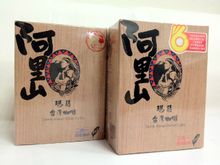
Alishan Mafei coffee is authentic Taiwanese coffee, Mafei (Mafeel) is taken from the language of the Zou nationality of Alishan Mountain, which means "very good to drink". Alishan is the planting area of coffee, and Alishan coffee is planted by the Zou nationality itself, and the name is Mafei (Mafeel). The coffee planted belongs to Taiwanese coffee. Because of the small production of Taiwan coffee in Alishan, it is rare and expensive.
Cuban Crystal Mountain Coffee
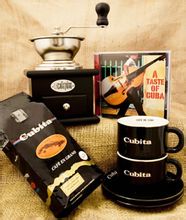
Cubita Coffee
In Cuba, coffee cultivation is regulated by the State. Cuba's best coffee-growing areas are located in the Central Mountains. Because this area is not only planted with coffee, but also produces precious minerals such as quartz and crystal, it is also known as Crystal Mountain. Currently, Crystal Mountain Coffee is synonymous with premium Cuban coffee. Crystal Mountain and Jamaica's Blue Mountains adjacent geographical location, similar climatic conditions, comparable to Jamaica Blue Mountain Coffee, Crystal Mountain is also known as "Cuba's Blue Mountain." Similarly, the annual output of imported coffee from Cuba's Crystal Mountain is not high, so there are prices but no markets in many cases.
The most representative is "Cubita Coffee" referred to as "Cubita", Chinese trademark "Hu Jue Coffee" adhere to the principle of perfect coffee, only do single coffee, coffee beans picking, to complete the manual, plus washing coffee beans, to ensure the quality of coffee. Cubita is like an elegant princess, with noble, tender and elegant characteristics. Excellent balance, bitter and sour very good combination, in the taste will have a delicate smooth, refreshing and elegant feeling. Known as a unique Caribbean coffee, Cuban Embassy designated coffee.
Sumatra Mantenin
Sumatra, which is rich in Indonesia, has unique characteristics cultivated by the special local geology and climate. It has a very rich and mellow flavor, and has obvious bitter taste and carbon burning taste. The bitter and sweet tastes are especially good, and the charm is unique. Indonesia is a big coffee producer. Coffee is mainly grown in Java, Sumatra and Sulawesi, with Robusta beans accounting for 90% of the total production. Sumatra mantinin is a rare arabica bean. These trees are planted on slopes between 750 and 1500 meters, and the mysterious and unique Sumatra gives mantnin coffee a rich aroma, rich taste, strong taste, slightly chocolate and syrup flavor.
Kona, Hawaii
Kona coffee beans from Hawaii are the most beautiful coffee beans in the world. They are unusually full, shiny, evenly shaped, with intense acidity and sweetness, and a moist, rich taste. Hawaii's volcanic climate creates Kona coffee's unique aroma, as well as its intensive cultivation, so each bean is spoiled and "ladylike," a sign of fullness and baby-like skin. Kona coffee tastes fresh, crisp, medium-bodied, slightly sour, with a rich aroma and a long finish. Best of all, Kona coffee has a blend of wine, fruit and spice aromas that are as charming as the colorful hues of this volcanic archipelago.
Brazilian coffee
Brazil is the world's largest coffee producer, accounting for nearly 30% of the world's total production. Brazilian coffee taste with a low acidity, with the sweet and bitter taste of coffee, the entrance is extremely smooth, but also with a touch of grass aroma, in the fragrance slightly bitter, sweet smooth mouth, aftertaste can make people comfortable and carefree. There are no outstanding advantages to Brazilian coffee, but there are no obvious defects. This kind of taste is mild and smooth, low in acidity, moderate in alcohol, and slightly sweet. All these soft flavors are mixed together, and it is the best test for taste buds to distinguish them one by one.
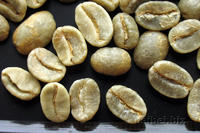
Colombia coffee beans
Colombia Special
Colombia coffee is one of the few single-origin coffees sold worldwide under its own country name. In terms of quality, no other coffee has been rated so highly by coffee drinkers. It has a very nice name, called "Emerald Coffee".
Colombia, located in the northwest of South America, is now the second largest coffee producer in the world. Colombia Premium is a representative of Arabica coffee. It is a traditional deep roast coffee with a strong and memorable taste.
Kenya AA
The Hollywood movie "Out of Africa" made Kenyan coffee famous all over the world. Kenya coffee is generally grown at 1500 to 2100 meters and harvested twice a year. Kenya's coffee buyers are world-class buyers of premium coffee, and no country grows, produces and sells coffee as consistently as Kenya. All coffee beans are first purchased by the Kenya Coffee Board, where they are appraised, graded and then sold at weekly auctions. The best coffee grade is bean berry coffee (PB), followed by AA++, AA+, AA, AB, etc., in that order. Kenyan AA coffee has a wonderful and intense flavor, a sip, it feels like it hits your whole tongue at the same time, the flavor is fresh and not overbearing, is definitely a complete and not heavy taste experience.
Harar, Ethiopia
Ethiopian coffee is mostly produced in the plateau above 2000 meters above sea level. The major producing areas include Djimma, Gambi, Yirgachefe, Sidamo and Harar. Among them, the Montenegro region of Harar is the only place in the world where there is wild coffee. Wild coffee there is auctioned in London every year.
Harar coffee is grown in areas ranging from the Darolebu plains at an altitude of 900 meters to the Chercher mountains in the Eastern Highlands of Ethiopia at an altitude of 2700 meters. These mountains provide unique characteristics to these perennial coffee beans: full, elongated fruit, moderate acidity, dry aroma (unbrewed coffee aroma) with a hint of wine acidity, moderate alcohol, strong pure texture, with a wonderful dark chocolate finish, typical mocha refreshing flavor, rich Arabic flavor.
Antigua, Guatemala
Produced in Guatemala, a South American country, this bean belongs to Bourbon coffee beans. It is one of the more sour varieties. It tastes mellow and slightly wild.
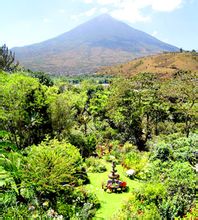
Guatemala Coffee Estate at the Foot of Volcano
It is best used to blend coffee. Antigua is the oldest and most beautiful city in America. As early as 1543, Antigua was the capital of all colonial times in Central America. After the great earthquake in 1773, Antigua was completely destroyed, so the capital was moved to Guatemala. Antigua is now a famous coffee producer, rich volcanic soil, low humidity, strong sunlight and cool evening winds are the characteristics of Antigua. Every 30 years or so, the area around Antigua is hit by a volcanic eruption, which provides more nitrogen to the already fertile land, and sufficient rainfall and sunshine make the area more suitable for growing coffee.
Some of Guatemala's finest coffee is currently exported to Japan, where it sells for $3 to $4 a cup.
Puerto Rico Yocote
Puerto Rico Yocote is a mesmerizing coffee with a full flavor, no bitterness, rich nutrition and fruity flavor. As early as the 1860s, coffee produced in Puerto Rico's Yaoko region won the reputation of premium coffee throughout Europe. At that time, the emperors and empresses of various countries regarded it as the best coffee, and the upper class of Europe also drank it widely. Yoko Coffee is grown on three farms in the south-western part of the island. It is made of fine clay soil and uses ancient coffee trees. Although the yield is lower than that of other varieties, it is generally of high quality. Its taste is intense and its aftertaste is long. This coffee sells for a high price, its aroma rivals that of any other coffee variety in the world, and is recognized by international coffee appraisers as the third best coffee in the world.
Galapagos, Ecuador
Ecuador is the world's highest arabica coffee plantation. Since coffee trees were first introduced to Ecuador in 5,
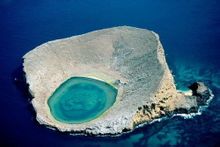
Salt-rich lagoons in the heart of the Galapagos Islands
The quality of its coffee has remained unchanged for 100 years, especially the coffee harvested in early June every year, which is known as "the best coffee in the world". Ecuadorian coffee beans are divided into Galapagos and Higante varieties, both of which are relatively large in size and heavy in weight. In particular, the unique geographical conditions of the Galapagos Islands have endowed coffee beans with excellent genes that are superior to coffee beans from other regions. Its excellent quality stems from the absence of any chemicals when growing. Galapagos coffee is all the more precious because Ecuador is losing land suitable for growing coffee trees.
Important Notice :
前街咖啡 FrontStreet Coffee has moved to new addredd:
FrontStreet Coffee Address: 315,Donghua East Road,GuangZhou
Tel:020 38364473
- Prev
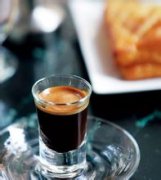
Fancy coffee Daquan fancy coffee do you know how many kinds
Fancy coffee Italian espresso Espresso usually needs 7 grams of coffee powder to make a cup. After 9 atmospheric pressure and 90 degrees Celsius, the strong coffee is rapidly extracted from 28ml to 30ml in a short time of 20 seconds. The most important thing about a successful Espresso is to see if there is a thick layer of reddish brown oil foam Cream floating on the surface. Espre
- Next

Fine Coffee learn the "Golden Rule" of making Coffee
The difference in the quality of coffee can be realized with only a sip. So, how can we tell whether a cup of coffee is good or bad? Capacity: espresso is distilled from coffee powder with an optimum capacity of 25-30ml and served in a white porcelain cone cup. Too large a cup will speed up the cooling of the coffee. If the distillation volume is less, the concentration is higher; if the distillation volume is too much, the purity becomes lighter and the taste is more reliable.
Related
- Beginners will see the "Coffee pull flower" guide!
- What is the difference between ice blog purified milk and ordinary milk coffee?
- Why is the Philippines the largest producer of crops in Liberia?
- For coffee extraction, should the fine powder be retained?
- How does extracted espresso fill pressed powder? How much strength does it take to press the powder?
- How to make jasmine cold extract coffee? Is the jasmine + latte good?
- Will this little toy really make the coffee taste better? How does Lily Drip affect coffee extraction?
- Will the action of slapping the filter cup also affect coffee extraction?
- What's the difference between powder-to-water ratio and powder-to-liquid ratio?
- What is the Ethiopian local species? What does it have to do with Heirloom native species?

